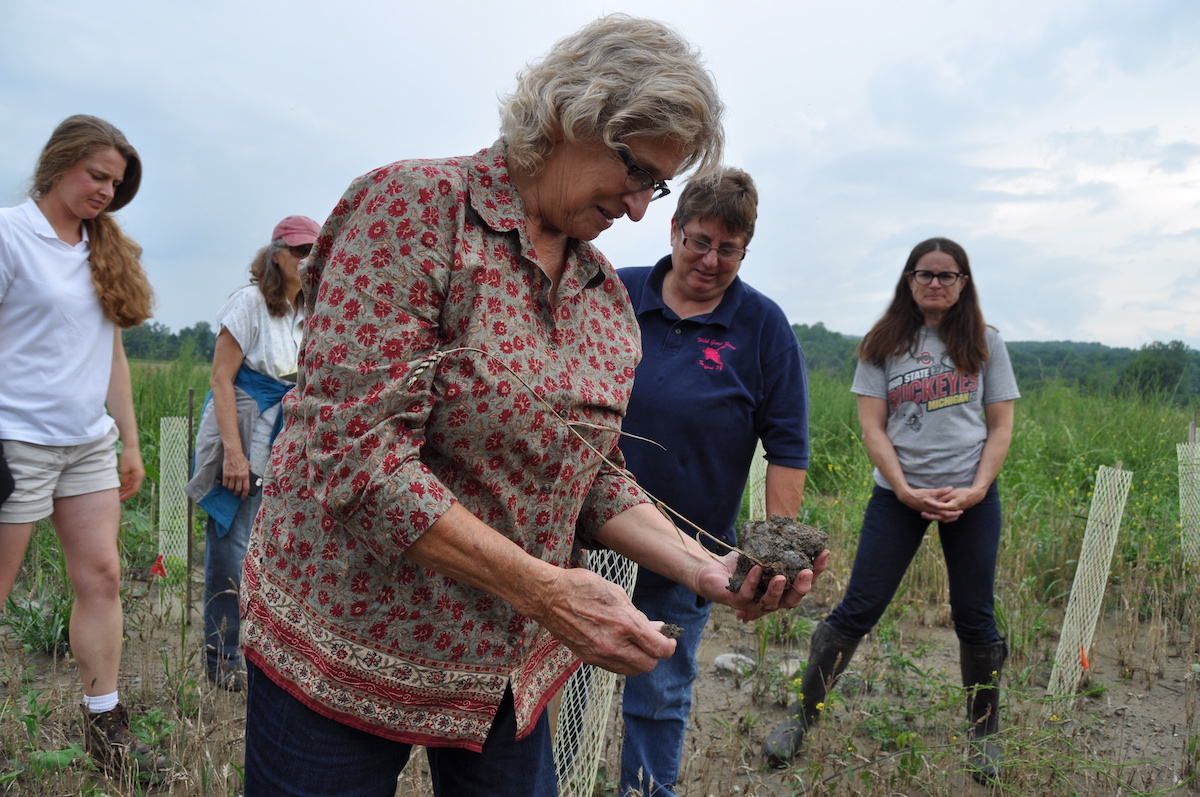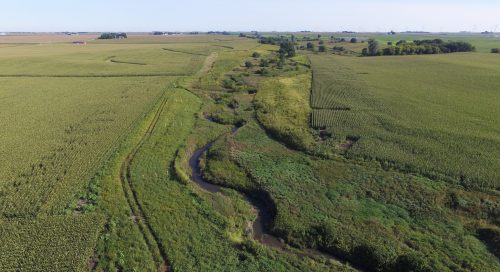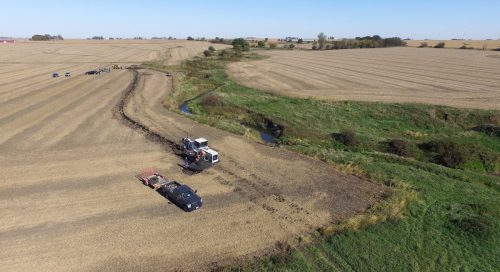It’s no secret that women in agriculture have a visibility deficiency. Yet, 43 percent of U.S. farmland is either farmed or co-farmed by women – that’s nearly 388 million acres – and at least an additional 87 million acres of rented farmland is owned by women.
With landowner engagement a top priority for most conservation professionals working on watershed projects, targeted outreach to women landowners and operators will be essential to achieving a critical mass in agricultural conservation. As Women’s History Month wraps up, I spoke with Gabrielle Roesch-McNally, Women for the Land Director at American Farmland Trust, about the why and how of reaching out to women landowners and operators about soil and water conservation.
“If we’re going to see large-scale changes on the landscape, we have to be thinking about all agricultural land. And when we really start to unpack who is in the driver’s seat, we know women have a really important role,” said Roesch-McNally.
Through outreach, research, technical assistance, and policy reform, Women for the Land works to close the gender gap in agriculture, especially when it comes to access to knowledge and resources related to conservation. One of the ways this gap manifests is women’s underrepresentation as beneficiaries of conservation incentive contracts, such as through USDA’s Natural Resource Conservation Service (NRCS).
From 2015 to 2020, women received only 16 percent of contracts awarded (American Farmland Trust, 2019). This is despite repeated studies showing women tend to have higher pro-environmental attitudes than men.
“So, we know that women have a lot of willingness and interest in being partners to support regenerative agriculture,” said Roesch-McNally.
Roesch-McNally says this underrepresentation is due to several factors. For one, limited staff capacity restricts landowner outreach and recruitment capacity, and historically there hasn’t been much emphasis on outreach aimed at women landowners specifically – although, that trend is shifting, especially at USDA.
“If you don’t emphasize outreach and engagement with certain groups that have been underserved, you tend to just get the folks who have been best served by those programs,” said Roesch-McNally.
Part of the challenge, too, is that, generally speaking, women aren’t included in the definition of historically underserved farmers. This means they can’t access funding and programs targeted to those groups.
In some places, overt discrimination still lingers, making some women feel unwelcome in their quest for resources and technical assistance.
But Roesch-McNally sees things changing, especially as she and others help bring greater attention to the need. One concrete example is the rise in funding opportunities for outreach and support for women landowners. Roesch-McNally is also seeing more images and stories of women in agriculture that are helping to change the narrative.
“I’ve seen a lot more storytelling going on. As much as I can point to things that I feel are still reinforcing old tropes, you see these new ones coming on and providing folks examples of what else is possible,” she said.
In fact, opening one’s mind about what a farmer looks like is one of the things Roesch-McNally says conservation professionals can do if they want to engage women landowners. Women with decision power on a farm may not be the one driving the tractor or talking to the seed supply dealer but are playing more behind-the-scenes roles that aren’t so stereotypically farmer, such as doing the books.
“Even women who are deeply involved in agriculture often don’t see themselves as the farmer,” said Roesch-McNally (her emphasis).
Recognition can begin with reaching the women who are connected to the producers or communities you are already working with and then discovering what their needs might be. Roesch-McNally warns against presuming they are getting the resources and support they need through their spouse, tenant, or family.
Moreover, engaging women landowners may require shifting outreach tactics, as there is no one-size-fits-all approach.
“Women landowners and farmers aren’t a monolithic group,” said Roesch-McNally.
For example, about half of non-operating women landowners have never farmed (USDA, 2016), so they may need more help navigating acronyms and resources. Moreover, because of how non-operating landowners can influence farming decisions, often through lease agreements, they may need different knowledge and skills, such as in negotiation, than a farmer.
It is not just about what information you deliver, but how you deliver it too. Roesch-McNally encourages a listen-first approach, which is at the heart of American Farmland Trust’s approach to reaching women landowners.
They organize women-only peer groups, called Learning Circles. As a less hierarchical approach than more traditional outreach and education methods, Learning Circles provide women landowners a space to build their knowledge and confidence together and from the ground up.
“That isn’t to say it isn’t important to have mixed spaces that uplift the voices of women. We’ve just found that having spaces that center women’s experiences and voices does a lot for building confidence and connecting to community,” said Roesch-McNally, who thinks there is room in the ag space for more experiential and peer-to-peer work, not just for women.
If you are interested in engaging women landowners in your watershed, check out the following resources by American Farmland Trust and others.
- Reaching Women in Agriculture: A Guide for Virtual Engagement from American Farmland Trust
- Tips for Hosting a Learning Circle from American Farmland Trust
- Improving Conservation Outreach to Female Non-Operator Farmland Owners, a curriculum manual from the Women Food & Ag Network
- The Female Farmer Project, a multi-platform documentary project (stories, a podcast, and a film) chronicling the rise of women working in agriculture
References
- Women in U.S. Agriculture factsheet from American Farmland Trust
- U.S. Farmland Ownership, Tenure, and Transfer from USDA Economic Research Service
Header photo courtesy American Farmland Trust



